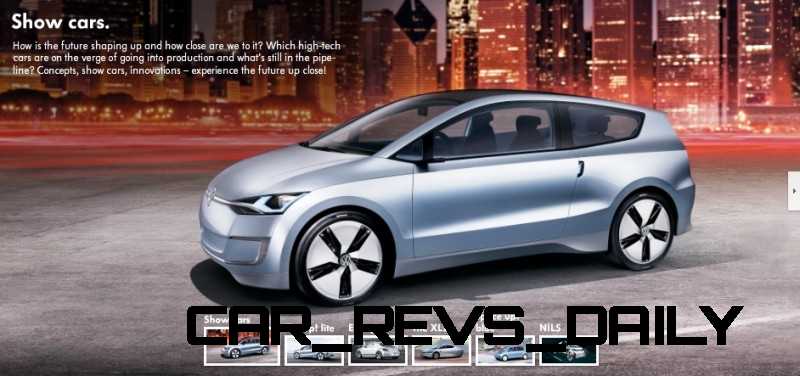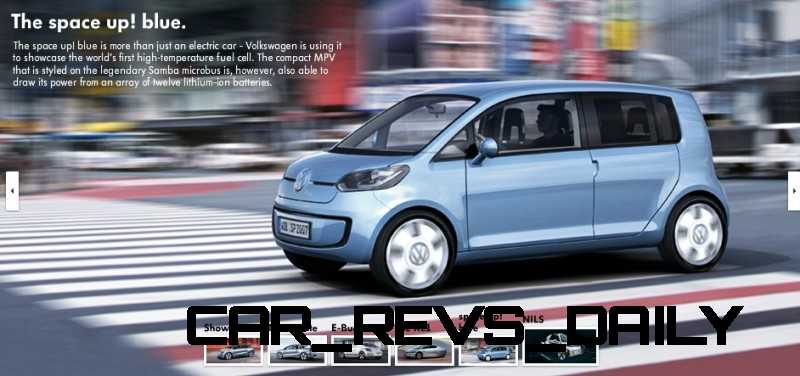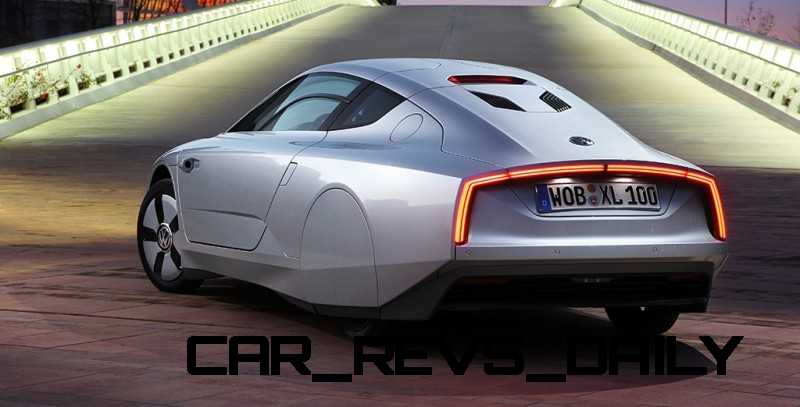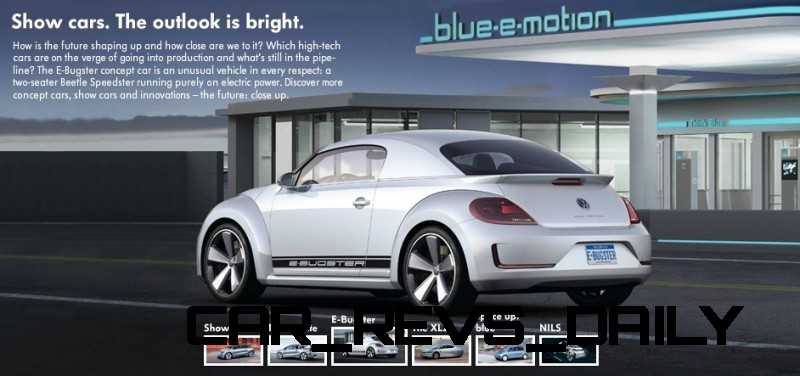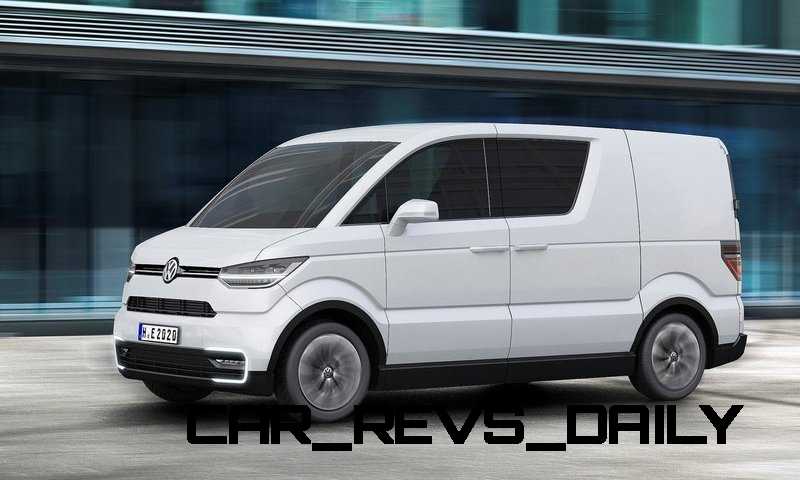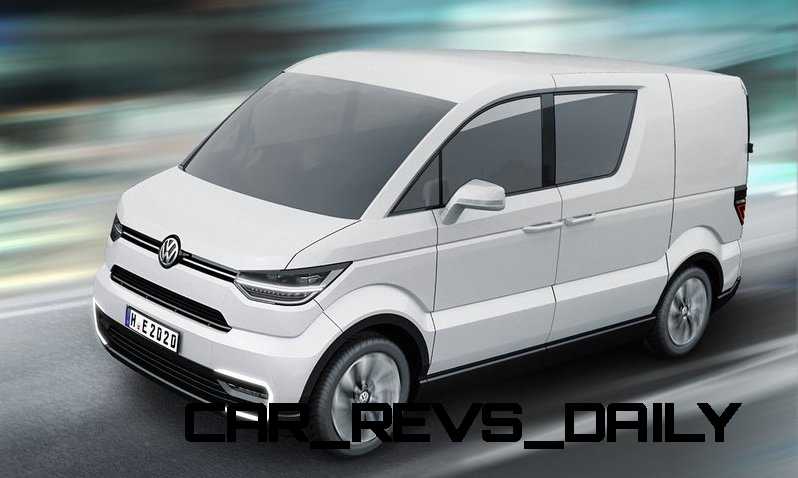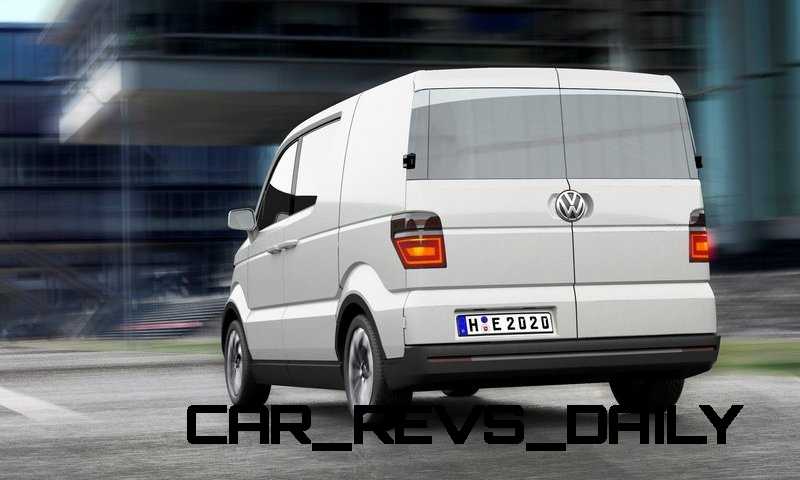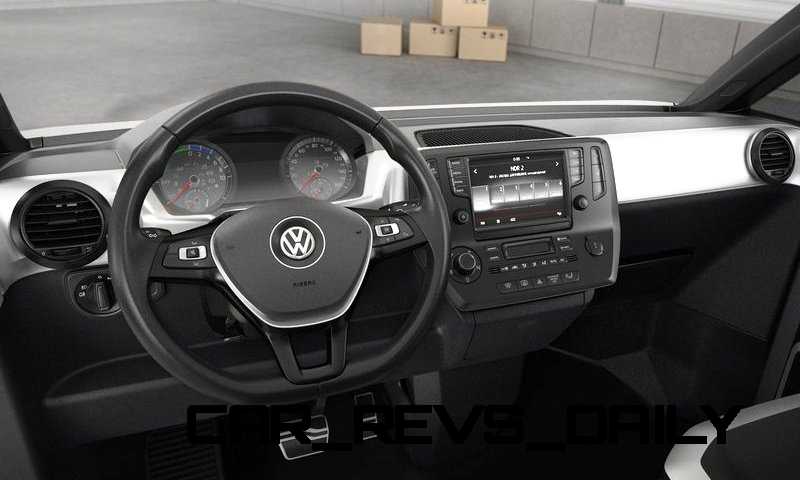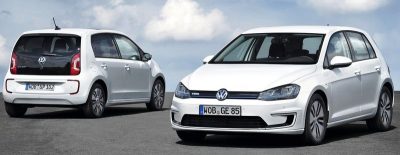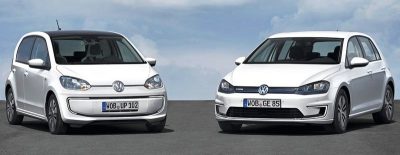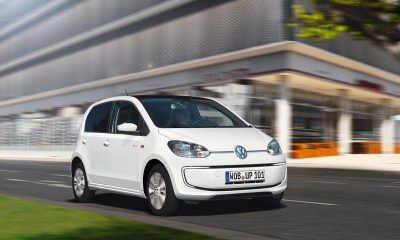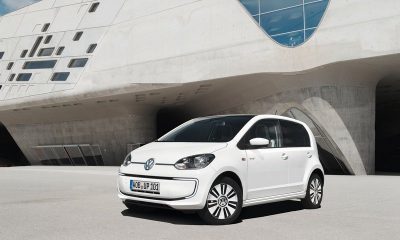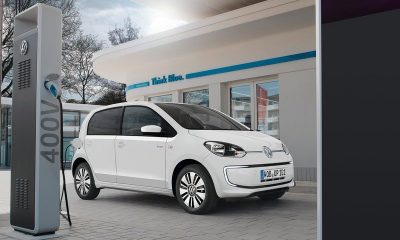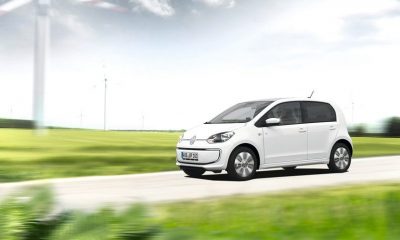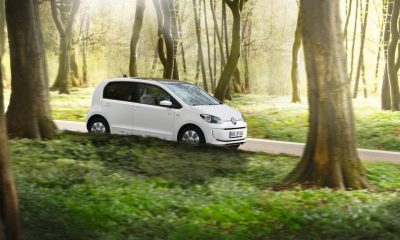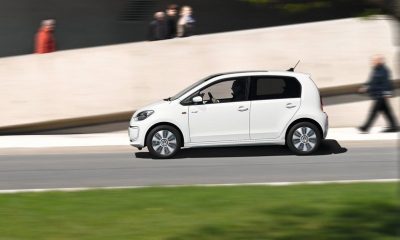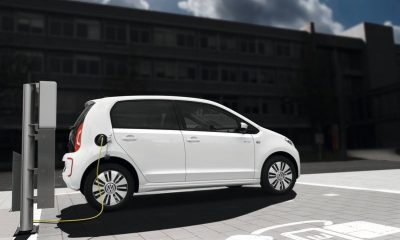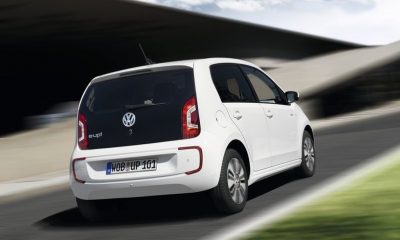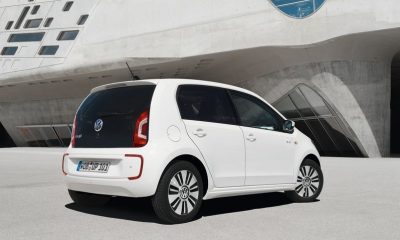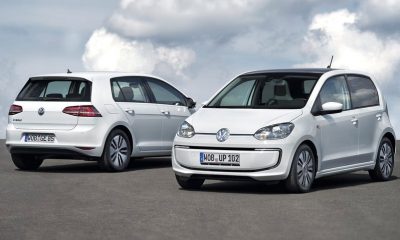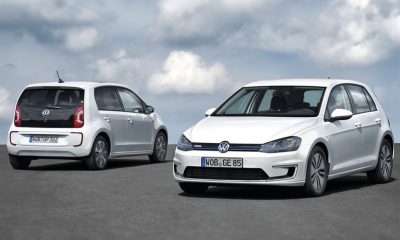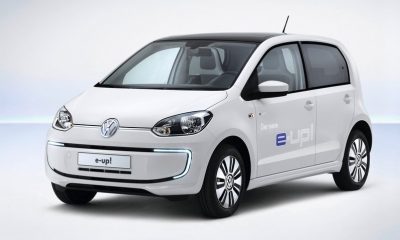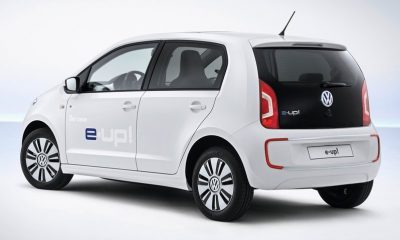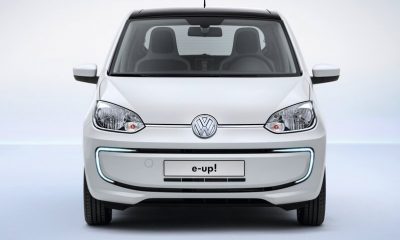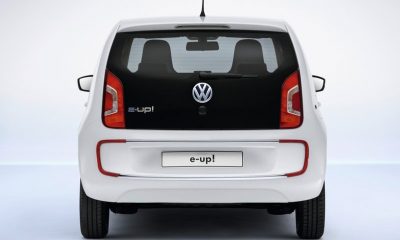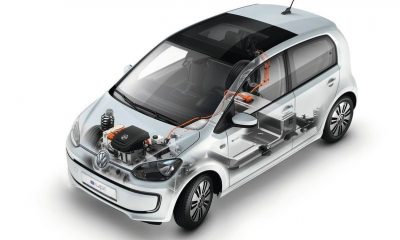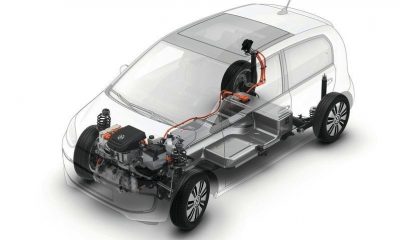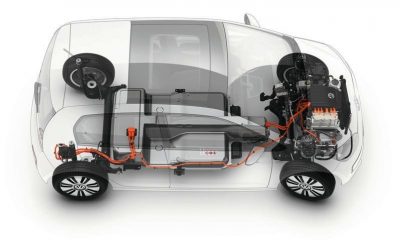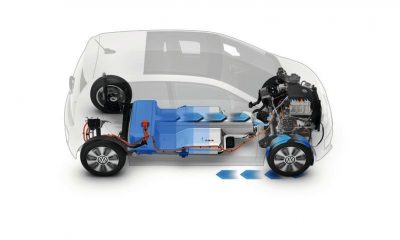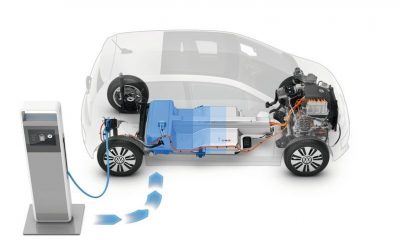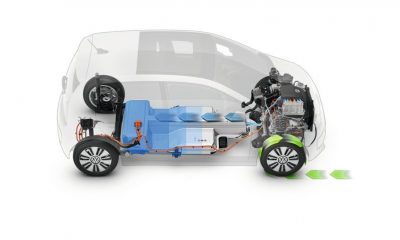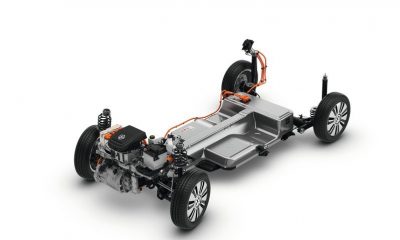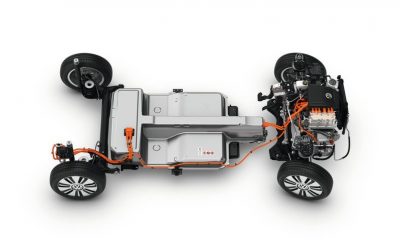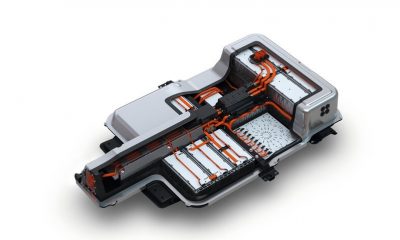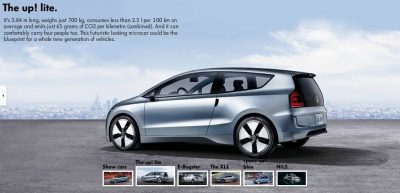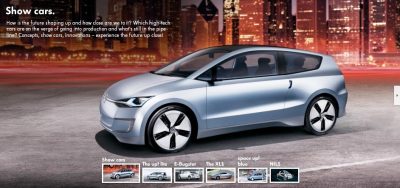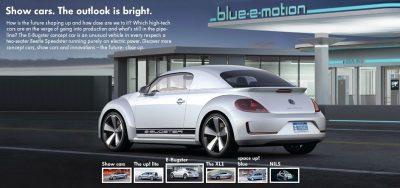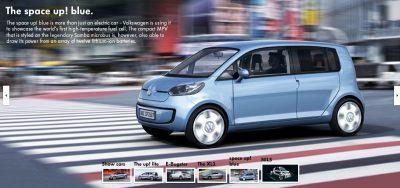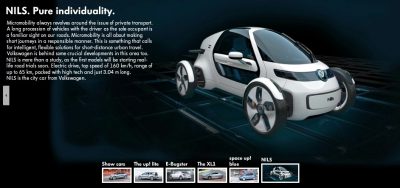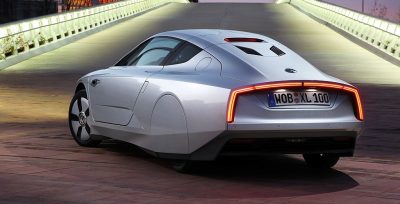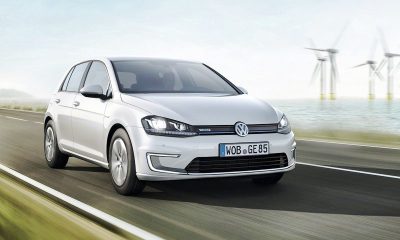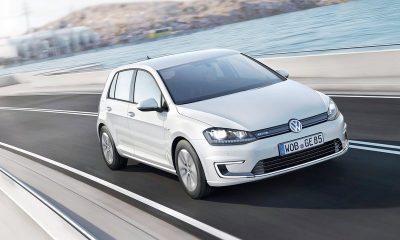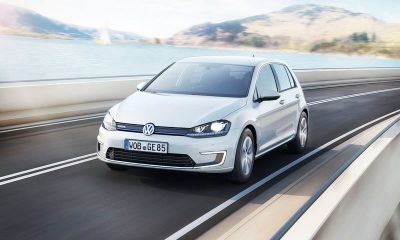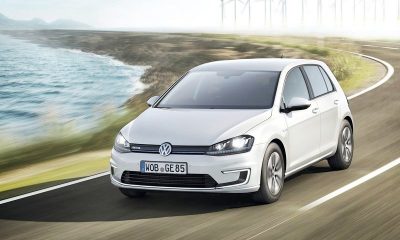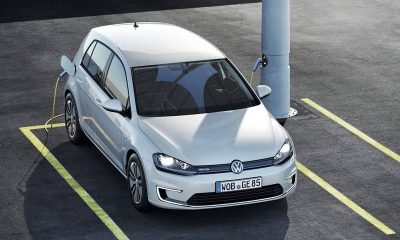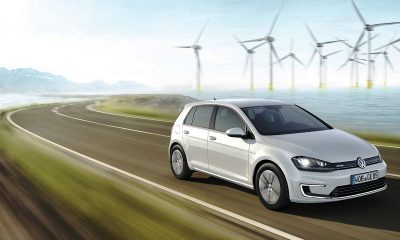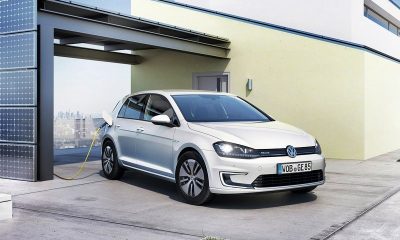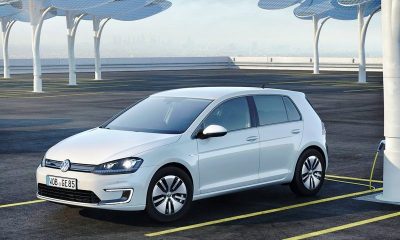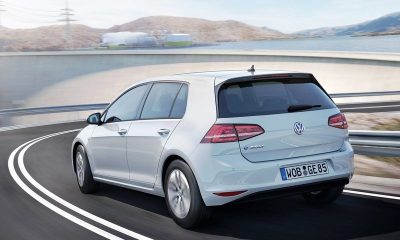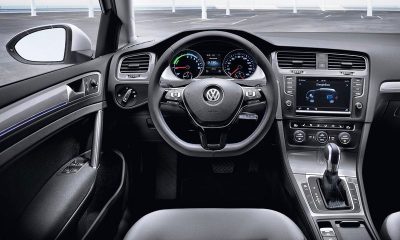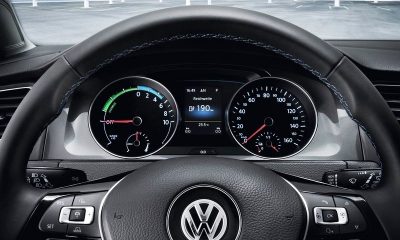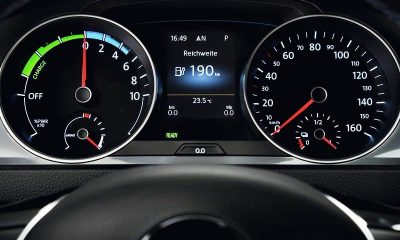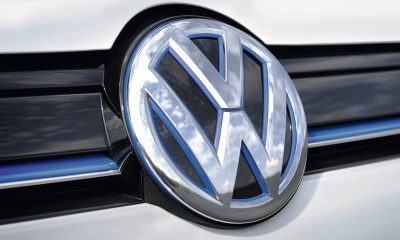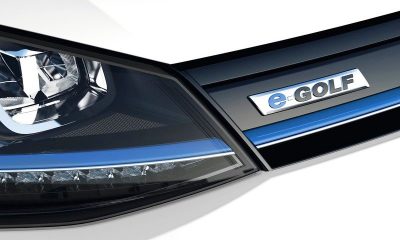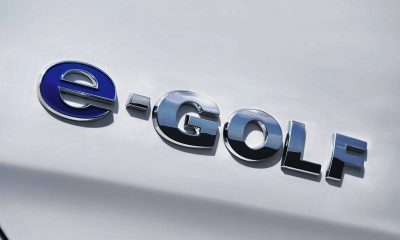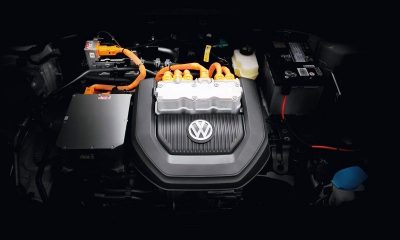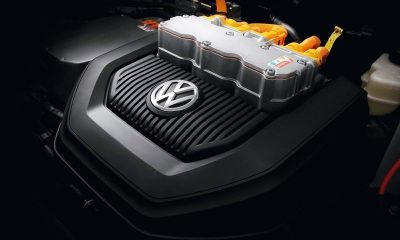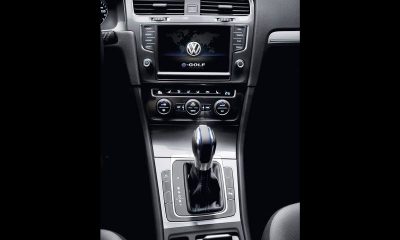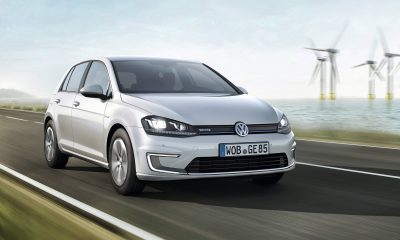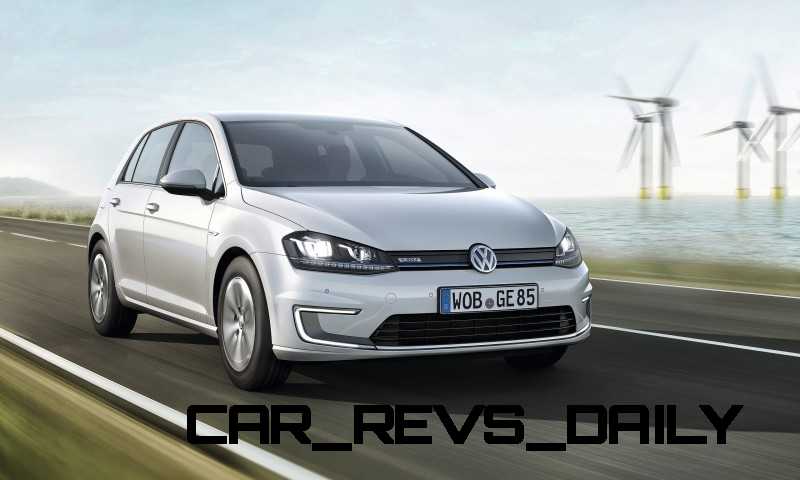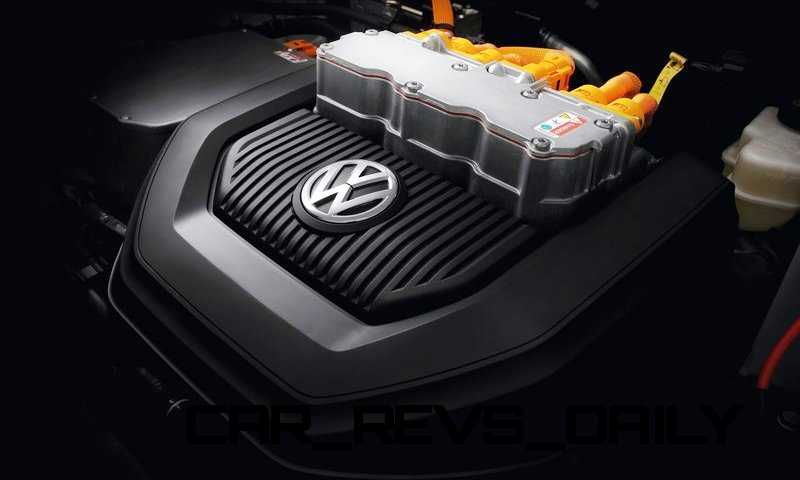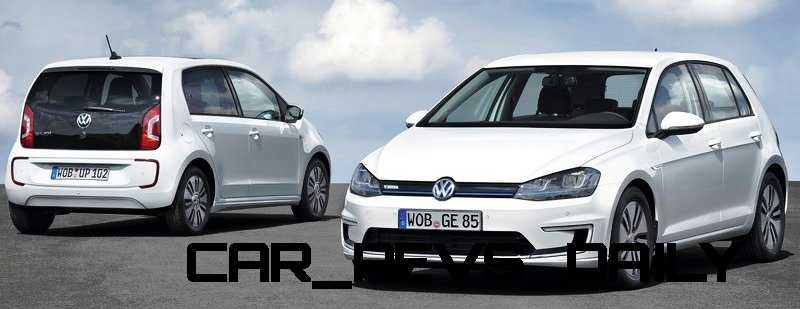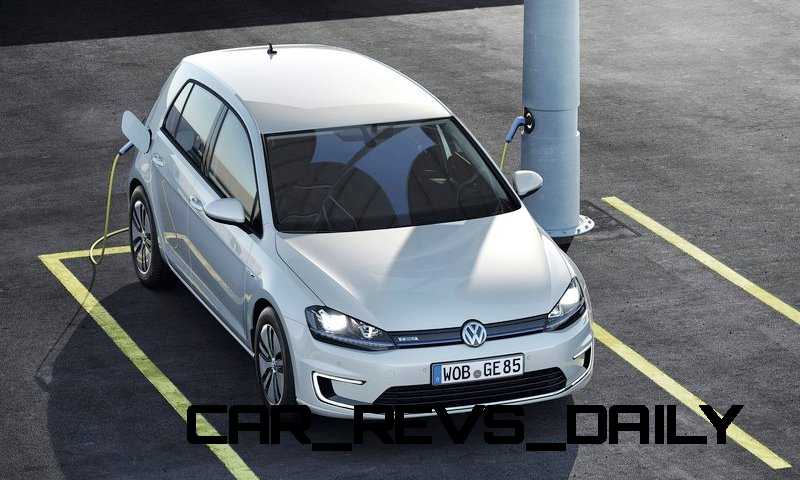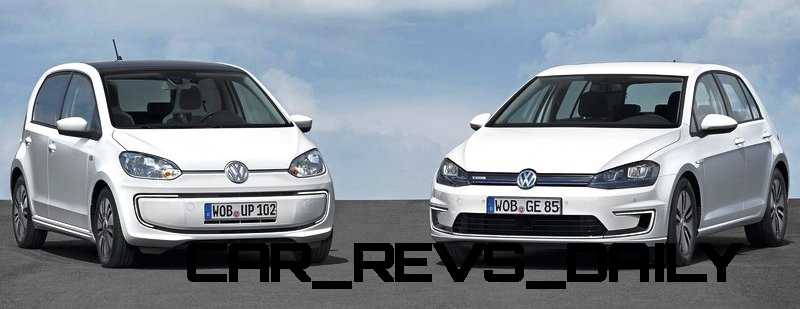The Volkswagen e-Golf, e-Up! and Up Lite will join the Detroit auto show festivities, with the Golf BEV debuting its all-new battery and powertrains in 2015 production form.
Featured in the cover image is the Frankfurt e-Co-Motion van concept.
The newest is the
The 2015 VW e-Golf is a fully electric vehicle, evolving and refining some of the components previewed under the Blue-e-motion concept name. Lucky for everyone, e-Golf rolls off the tongue much more easily.
VW’s aim for the e-Golf is not actually part of the company’s world domination plan – at least in the short term.
The e-Golf will follow the e-Up supermini as the first limited-production EVs offered for sale to the public. If imported to America, the e-Golf will be destined for proven west-coast EV markets like California, Oregon and Washington.
VW has been running around with super efficient Golf concepts since at least 2007 under a variety of names. The overall campaign is called ’Think Blue’ and the range of models varies from a tall-gear and aero optimized Golf BlueMotion concepts all the way to this pure EV version.
In Europe, a variety of ’BlueMotion Technology’ and other badges denote high efficiency on standard VW’s like the Passat and Polo.
This BEV is already well on the way to production and may even join the standard MkVII Golf when it arrives in the U.S. in early 2014. The battery EV market is quite disjointed at the moment, with record sales of the Tesla Model S on the high end, but faltering momentum for the pioneering Nissan Leaf.
Delaying the launch to coincide with the latest MkVII Golf both allowed technology refinements, reliability testing and also a sleeker aero and electronic package to lighten battery loads. After all, hundreds of normal car noise, clunks and vibrations are perceptible without the background hum of an engine. Nissan even had to create special wiper motors for the Leaf – as even the quietest Infiniti wipers still caused too much cabin disturbance. This level of minute tweaks to a production model is why almost no automakers have BEV versions of normal cars. But this is no ordinary Golf under the skin.
Volkswagen e-co-motion concept van
2015 Volkswagen e-Up!
2015 Volkswagen e-Golf
Press Release
IAA 2013 – Volkswagen electrifies high-volume production: World premieres of the e-Golf and e-up! as leading duo
The e-Golf. Das e-Auto.
190 km driving range and LED headlights as standard
The e-up! The world champion of efficiency.
11.7 kWh/100 km for €3 sets benchmark for efficiency
Wolfsburg, 27 August 2013 – In a dual world premiere, Volkswagen will be presenting two new and extremely efficient electric cars at the International Motor Show (IAA) in Frankfurt (10th to 22nd September): the e-up! and e-Golf. This means that Europe’s most successful carmaker is transitioning two high-volume production models to the age of electric mobility. Both zero-emissions cars offer unlimited everyday practicality, each has four doors, and they are attractively equipped. Standard features: automatic climate control with parking heater and ventilation, radio-navigation system, windscreen heating, LED daytime running lights and, in the e-Golf, the Volkswagen brand’s first use of LED headlights. The two newcomers are also leaders in energy efficiency: the e-up! consumes just 11.7 kWh of electricity per 100 km – this makes it the new world champion in efficiency. The e-Golf, positioned two classes higher, attains an excellent value of 12.7 kWh. Given an electricity price of €0.258 per kWh (Germany, as of 31st July 2013), driving 100 km with the e-up! costs just €3.02, and with the e-Golf it is around €3.30.
Made in Germany. Innovative drive technologies are core competencies at Volkswagen. Therefore, the e-motors, gearboxes and lithium-ion batteries of the e-up! and e-Golf are developed in-house, and they are manufactured in large Volkswagen component plants in Germany.
Typical Volkswagen. All Volkswagen are intuitive to operate, extremely practical in everyday use and sophisticated, and these traits have been fully transferred to the brand’s new e-vehicles. The zero-emission cars from Volkswagen are manufactured with the same high-volume production systems as their counterparts with combustion engines.
e-Golf data. The e-Golf, which is being presented in a world premiere in Frankfurt, is driven by a 85 kW / 115 PS electric motor. The motor produces its maximum drive torque of 270 Nm as soon as it starts off. The results: the front-wheel drive e-Golf reaches 100 km/h in 10.4 seconds. On a motorway, the speed of the five-seat front-wheel drive car is electronically limited to 140 km/h.
e-up! data. Also making its debut in a world premiere at the IAA is the four-seat e-up!. Its electric motor produces 60 kW / 82 PS. This motor transmits 210 Nm of torque to the driven front axle from a standstill. It completes the sprint to 100 km/h in 12.4 seconds. Top speed: 130 km/h.
Driving ranges tailored for commuters. The e-up! can drive 160 km on one battery charge (18.7 kWh), while the e-Golf with its larger battery (24.2 kWh) has a range of 190 km. In both models, two very efficient driving modes (“Eco”, “Eco+”) and four just as easy to activate regenerative braking modes (“D1”, “D2”, “D3” and “B”) help to extend maximum ranges. And they are driving ranges that make sense. In Germany, for example, studies by the Federal Ministry for Transport, Building and Urban Development found that around 80 per cent of all car drivers in Germany drive fewer than 50 km daily.
Quick charging. The fastest CCS charging stations (direct current) shorten the time needed to charge the battery of an e-up! or an e-Golf to 80 per cent capacity to just around half an hour.
Powertrain and fuel strategy. Over the past decade, Volkswagen has already systematically sketched out a schedule for the future in its powertrain and fuel strategy, which included starting points for electric vehicles like the e-up! and e-Golf. This strategy sets up a timeline with realistic time windows for the introduction of alternative drive systems such as the hybrid, electric and hydrogen-based systems. In this scenario, the all-electric drive system – which will be demonstrated by the new e-up! and e-Golf – represents an indispensable and sensible supplemental drive system. That is because electric cars utilise renewable energy sources and enable zero-emissions mobility in metropolitan areas. Nonetheless, well into the future Volkswagen will continue to promote an intelligent mix of the most efficient drive systems.
Driving at the pace of the big city. The fact is that the target group for electric cars is growing, because a paradigm shift has begun. Sustainable mobility is having an increasing impact on people’s actions. Yet the products for implementing this environmental awareness must be practical and fun as well – such as the e-up! and e-Golf which accelerate to big city pace in just a few seconds. The new zero-emission Volkswagen cars therefore have the potential for irreversibly charging up the electric car segment with innovative technology, a high level of everyday practicality and a dynamic driving feeling.

Tom Burkart is the founder and managing editor of Car-Revs-Daily.com, an innovative and rapidly-expanding automotive news magazine.
He holds a Journalism JBA degree from the University of Wisconsin – Madison. Tom currently resides in Charleston, South Carolina with his two amazing dogs, Drake and Tank.
Mr. Burkart is available for all questions and concerns by email Tom(at)car-revs-daily.com.



